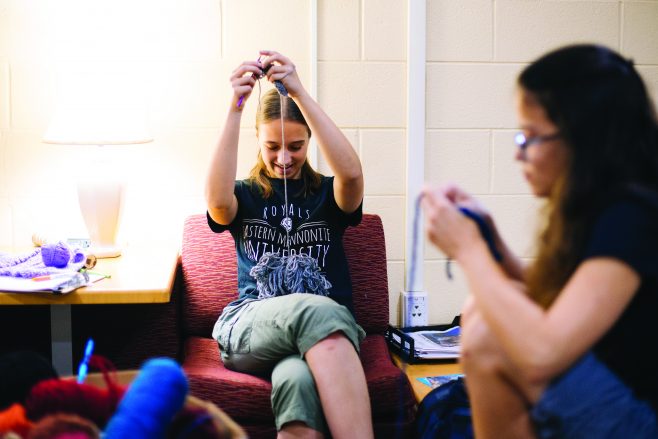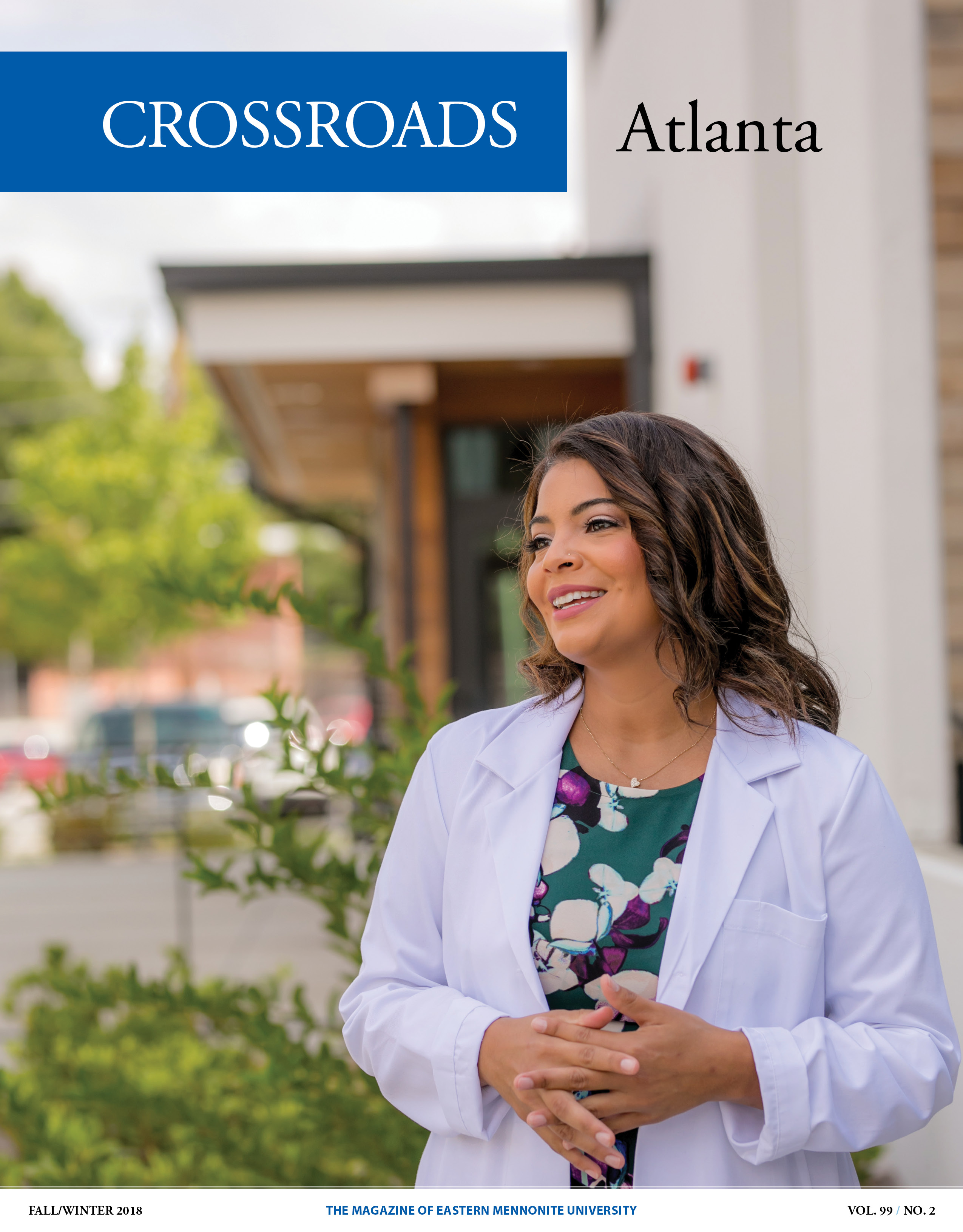
Students knit in a Wednesday chapel break-out session called “The Chronicles of Yarnia,” hosted by administrative assistant Barb Byer. The small group sessions during chapel time have expanded faith-sharing opportunities for students, faculty and staff.
WITH THE BEGINNING of the new academic year at Eastern Mennonite University comes inevitable changes – a new schedule, new courses and new demands on time. But this fall, one of the mainstays of the weekly schedule looks and feels much different.
Consolidated into one weekly meeting that alternates with convocation, campus worship is now twice the time, supported by a multitude of volunteer leaders, and hosted in a multitude of different places.
Word is, too, that the multitudes are responding.
That makes absolute sense to pastoral assistant Lindsay Acker. “One worship style is never going to fulfill everybody’s spiritual needs,” she says. With different “break-out groups” meeting around campus, Acker summarizes the new format as “so much opportunity to do your own thing.”
STEM fans gather in the Suter Science Center to explore science and faith. Seminarians host “welcoming prayer.” A residence life director offers co-exploration of a book about the journey from Christian to Christ follower. A staff member opens space for entering the Gospel through informal dramatics.
And there’s more, Acker says. “Peace Fellowship is working on an interfaith break-out group to co-host with the Center for Interfaith Engagement. And have you heard about the ‘Chronicles of Yarnia’ group? They are gathering for knitting and reflection. I love that spaces like these are now being welcomed and supported by the university, and I hope it can lead to greater change and understanding.”
This revisioning has been years in the making.
During many past chapel services, campus pastor Brian Martin Burkholder watched the clock as the 30 minutes trickled away. So, too, did some of the audience – heading out to class or other commitments while music was playing, a speaker was wrapping up, or announcements finished.
The amount of time wasn’t the only concern of Burkholder and the campus ministries council. They were asking questions attentive to enhancing faith and spiritual life on campus: Would other formats for gathering be more formational? Could more options be offered to meet more community and individual needs?
The experimental answer is programming that is both “invitational and intentional,” Burkholder says. “This structure expands our time together, offers choices for how a person wants to engage and brings people into spaces around campus where they are both comfortable and challenged. We are broadening our ministry to better meet the growing diversity of our student body in connected and collaborative ways.”
Pastoral assistant Luke Hertzler calls the new format “a beautiful and energizing space for the EMU community to come together centered around Christ … embracing unity in diversity.”
“We all have different ways we experience and love God,” he said. “Regardless of what our God-given calling or passion is, we can still be a part of the same revitalizing, Spirit-led movement emerging across campus this year.”
Though Acker says the break-out groups are a “great way to celebrate our differences,” she sees some “kinks to work out.” The fact, though, that EMU is trying something new towards the goal of engaging with the community’s diverse spiritual needs is meaningful.
“I hope that in doing so, we can grow and keep ourselves accountable to students’ needs,” she said.
